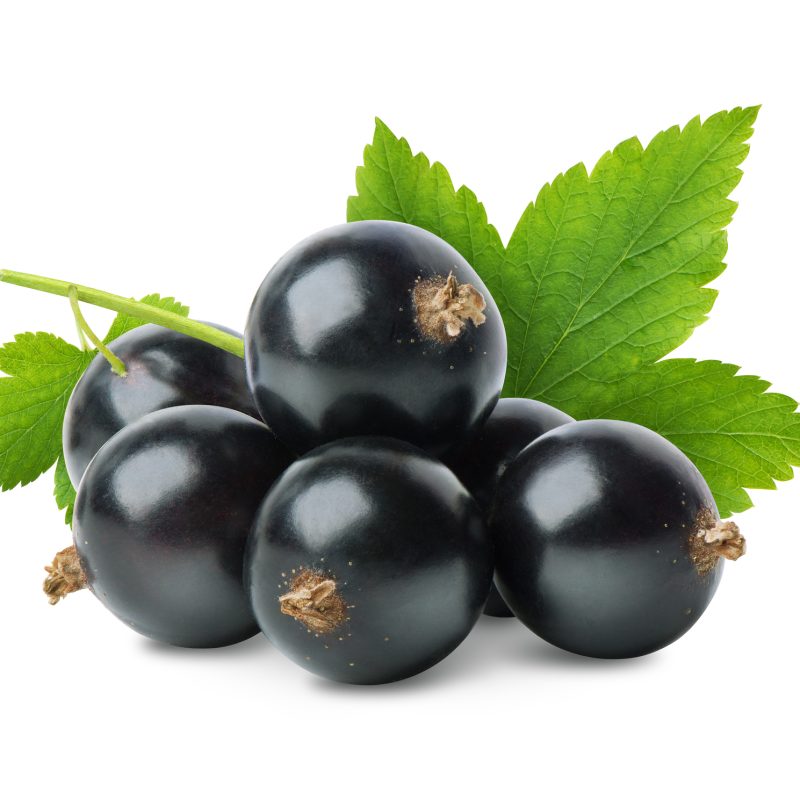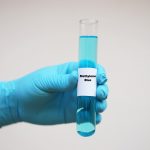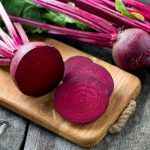
Throughout history, black currant has figured prominently as a potent botanical for treating a variety of ailments. Its abundance of vitamins and minerals makes it an ideal adjunct to natural remedies for colds and flu. Similarly, its anti-inflammatory propensity has proved useful in the treatment of arthritis and joint pain. Read on to learn more about the history of this botanical as well as ways to incorporate it into any homeopathic regimen.
Centuries of Success
The use of black currant in “traditional remedies” originated in England and parts of northern Asia as far back as the 16th century. At that time, it gained popularity as a means of treating a plethora of health conditions, including maladies plaguing the digestive system, skin conditions, and respiratory problems. Early folklore believed that black currents could bring about a boost in energy levels, making it a popular choice for individuals suffering from listlessness.
While these blackish-purple berries once grew in the United States, they suffered a setback when scientists discovered that they played host to a unique form of fungus known to kill off forests of white pine trees. Rendered illegal and banned throughout the United States in the early 1900s, black currents have only recently enjoyed a boost in popularity.
The black current’s intense, tart and bold flavor seems to mellow into sweetness upon ripening. This may explain why the individuals of early England experimented with black currant extracts to prepare teas and flavored syrups. Blending these extracts with herbs and spices further enhanced their medicinal properties as well as making for delicious foods and beverages.
Modern Applications
Today black currant continues to hold a place of prominence in many natural health and wellness products. Supplement manufacturers capitalize on the plant’s abundance of potassium, vitamin C and anthocyanins, compounds known to protect the body from the damage incurred by free radicals. We will address this in more detail as the article unfolds.
Rich in an omega-6 fatty acid known as gamma-linoleic acid, preparations containing black current can help reduce inflammation as well as improve symptoms of inflammatory conditions like rheumatoid arthritis.
Eyes on the Prize
The anthocyanins present in black currents have shown promise in the treatment of glaucoma, a leading cause of blindness. These compounds can foster improved blood flow in the eyes, thereby slowing progression of the disease. Linoleic acid, which we find in abundance in many Vitamin C-rich berries, may also help improve dry eye syndrome as well as other symptoms/causes of eye strain and fatigue.
A Menu of Multiple Benefits
A single serving of this colorful berry provides close to 56% of one’s daily recommended dose of vitamin C, the virtues of which we extolled above. Additionally, black currents contain the following healthy vitamins and trace minerals ~
- Iron
- Calcium
- Phosphorous
- Magnesium
- Manganese
- Vitamins B1, B2, B3, B5 and B6 (thiamine, riboflavin, niacin, pantothenic acid, and pyridoxine)
- Vitamin A
- Folic Acid
- Zinc
Potential Contraindications
Despite their cornucopia of benefits, black currents do hold the possibility of slowing the blood clotting process in some individuals. Prudent advice recommends speaking with a medical professional if currently on prescription blood thinners or living with a bleeding disorder.
Black currants may also have a tendency to lower blood pressure in sensitive individuals. While physicians generally concur that keeping a vigilant eye on lowering blood pressure usually improves one’s overall health, it can cause and/or exacerbate problems for those with inherent low blood pressure or taking blood pressure medications. Signs of dangerously low blood pressure may include dizziness, fainting and blurred vision.
The Role of Black Currents in Sports and Physical Activity
Depending upon the intensity and duration of an exercise session, the human body can either achieve beneficial adaptive changes or suffer underlying tissue damage. The latter may impact subsequent workouts as well as long-range wellness. Functional superfoods offer the potential to support the body by way of managing the harmful aspects of exercise.
Black currants have gained recognition as a “superfood” in the fitness world due to their high polyphenol content, more than any other berry. Owing in large part to their high content of the aforementioned antioxidants and anti-inflammatory compounds, athletic subjects reported that consumption of black currant not only accelerated their post-exercise recovery time but also tended to lessen muscle soreness.
In 2018, the International Olympic Committee (IOC) released a statement clarifying the efficacy of dietary supplements for athletes, in which they noted that polyphenols in general (and anthocyanins in particular) showed promise in increasing mitochondrial biogenesis and fostering improved endurance performance.
Blood Flow Benefits For Athletes
The abundance of anthocyanins present in New Zealand black currants may also exert a powerful effect upon the vasoactive properties of a body during athletic exertion. These benefits can include increasing vasodilation as well as decreasing mean arterial blood pressure. However, effects of anthocyanins on an athlete’s exercise performance without having first engaged in a muscle-damaging/metabolically demanding bout of exercise do not seem quite as clear. The mechanisms by which anthocyanin intake can enhance exercise performance may include effects on blood flow, metabolic pathways, peripheral muscle fatigue, or a combination of all three.
One research study sought to evaluate the potential of black currant supplementation when taken by athletes, focusing specifically on oxidative markers, cognition and general side effects. Data did indicate a reduction in oxidative stress under the conditions of exercise. However, the researchers did not deem the results highly significant; while the magnitude of change in the statistical mean ranged from moderate to large, the overall change among the test subjects did not vary greatly from the control group.
Why New Zealand?
Black currants cultivated in New Zealand boast a higher concentration of anthocyanins and other phytochemicals than those grown in other countries, most likely due to a growing environment filled with long, sunny days and higher-level ultraviolet rays. The anthocyanin content of juice produced from these berries lies in the range of 336 and 850 mg/100 mL, in comparison to non-New Zealand black currants, with an anthocyanin content ranging from 170 to 310 mg/100 mL of juice.
Perhaps this may explain, in part, why New Zealand -grown black currants, when compared to other black currant varieties grown in other countries, seem able to foster a small yet significant improvement on athletic performance. This result appeared particularly when subjects took black currant powder for 7 days, at a dose containing 105–210 mg anthocyanins, with a final ingestion occurring 1–2 hours prior to engaging in exercise. While the data clearly revealed evidence of a direct effect on sports performance, the mechanism by which this occurs still remains largely speculative.
Regulating the Anti-Oxidative Response
Science highlights yet another quality that renders New Zealand black currants unique: the anthocyanin ratio of two specific elements, cyanidins and delphinidins. Together these compounds possess the capacity to switch on the body’s master antioxidant regulator Nrf2. This provides multiple performance and recovery benefits, all from just a single mechanism.
The human body’s modulation of its immune response rests on its ability to tightly control regulation of the inflammation process. The transcription factor known as nuclear factor erythroid 2-like 2 (Nrf2) bears the responsibility of mediating inflammation. Once Nrf2 gets stabilized following oxidative stress, it forces the expression of both antioxidants and “cytoprotective genes”, which in turn bring about the anti-inflammatory response crucial for igniting the healing process. Given this key role, scientists feel that preventing Nrf2 dysregulation may lead to new approaches and therapeutic applications for a variety of chronic inflammation-related conditions.
Protection Against Superabundant Oxygen
Several everyday processes in nature – ultraviolet (UV) rays from the sun, a lightning strike, photosynthesis in plants – foster the creation of ozone, also referred to as active oxygen. Once released into the air, this compound morphs into a purely organic cleansing agent or disinfectant. The high oxygen molecular structure of ozone (O3) enables it to purify its surroundings. On an internal level, the human body relies on active oxygen to protect us and defend against invaders like bacteria. However, the presence of superabundant active oxygen can begin to harm the body.
The body counts on the activity of antioxidants to eliminate toxins and free radicals. Some scientists feel that diseases such as cancers and arteriosclerosis evolve as a result of superabundant active oxygen. This hypothesis led to embracing the need for including antioxidant-rich foods in the modern diet, a simple and positive step towards preventing oxidative toxicity. Oxygen radical absorbance capacity (ORAC) describes one method of assessing antioxidant capacity.
While many dark berries and their derivatives may boast high levels of valuable antioxidants, black currants in particular have an ORAC value (Oxygen Radical Absorbance Capacity) of more than double that which we find in red wine, and more than 10 times higher than blueberries. When we consider just how much “cleansing power” we can harness from this, we begin to see the health/wellness value of the dark-colored New Zealand black currant.
Final Thoughts
With its rich history and proven benefits, black currant and its various derivatives remain a popular ingredient in traditional medicine. In terms of modern medicine and the realm of sports/wellness supplements — black currant extracts, concentrated capsules and powdered drink mixes — many recreational and elite athletes find themselves drawn to the New Zealand black currant as a valuable addition to any health and wellness routine.
References:
https://journals.sagepub.com/doi/abs/10.3233/BR-2010-004
https://pubmed.ncbi.nlm.nih.gov/29261130/
https://th.medklinn.com/en/medklinn_life/how-does-active-oxygen-benefit-our-daily-lives/
https://www.webmd.com/diet/health-benefits-black-currant






